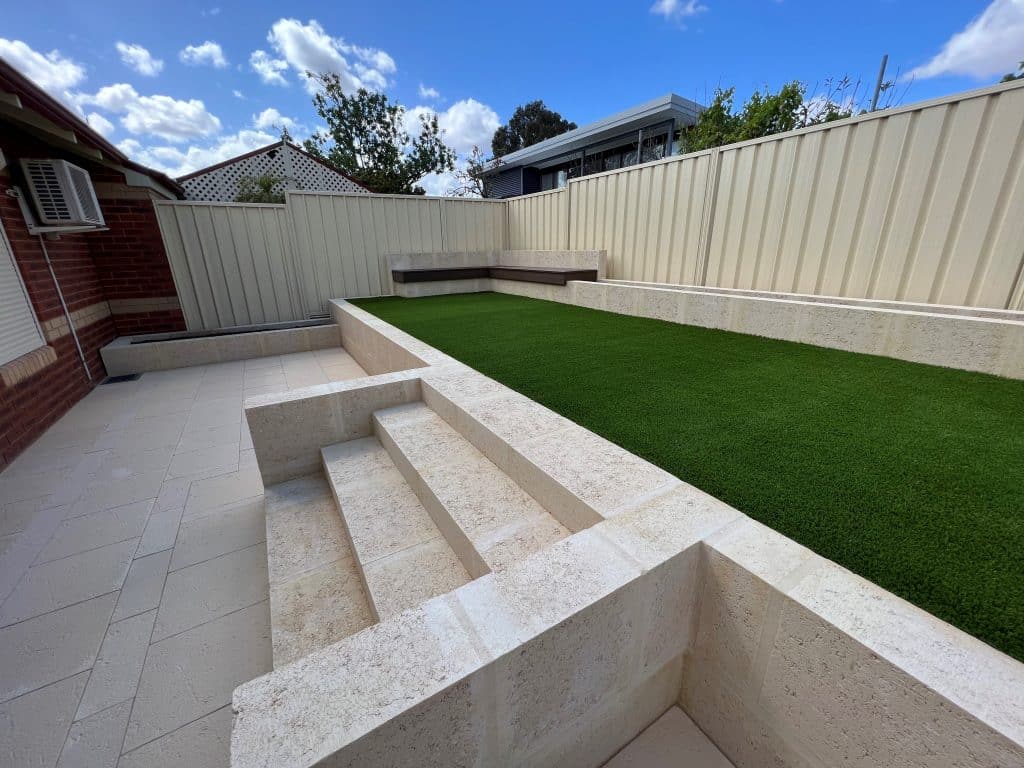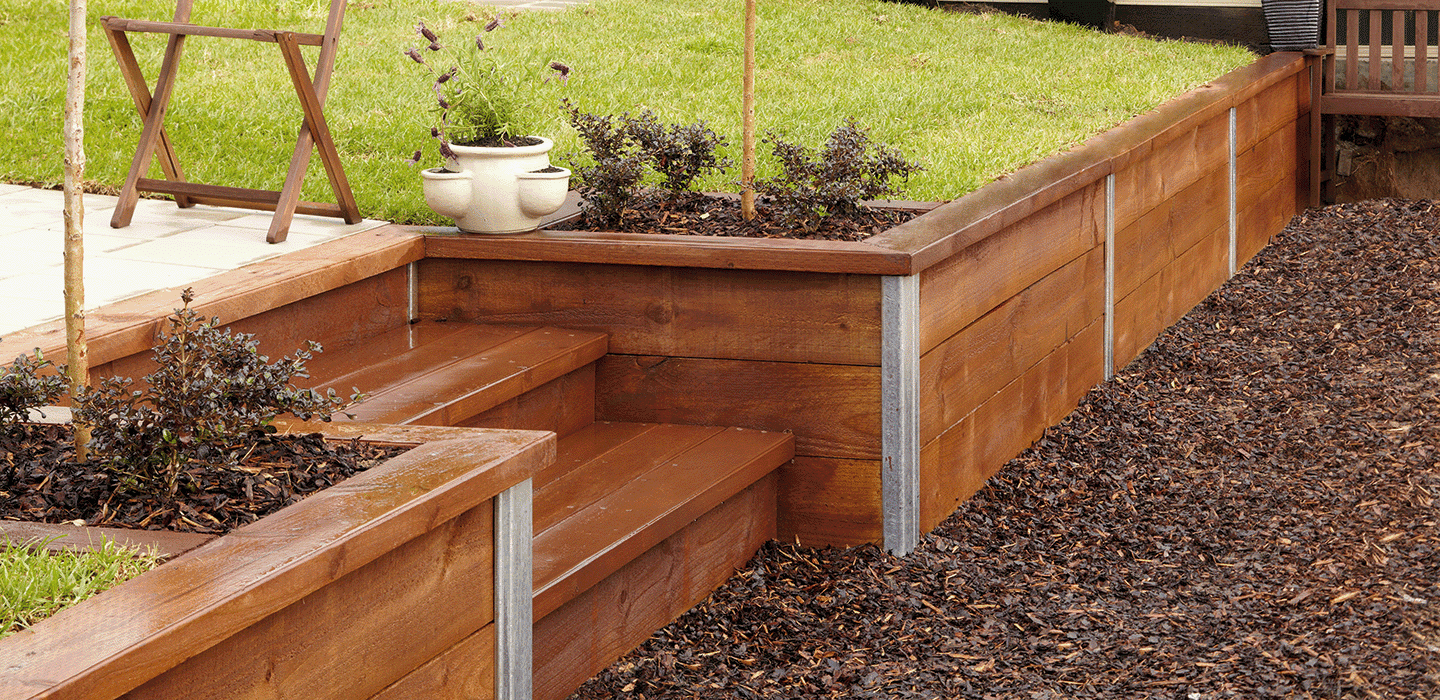Enhancing Residential Property Stability: The Duty of Retaining Walls in Soil Retention and Erosion Control
In the world of building monitoring, keeping security and stopping erosion are paramount problems for residential or commercial property owners and designers alike. Keeping walls stand as quiet guardians, playing a vital role in soil retention and erosion control. Their value prolongs past mere architectural support, influencing the total honesty and longevity of a building. By exploring the subtleties of different kinds, design considerations, building and construction methods, and maintenance tips connected with preserving walls, a much deeper understanding of their crucial role in boosting home security emerges. The elaborate dance between design expertise and environmental harmony introduces a compelling story that underscores the essential nature of preserving walls in modern-day land management.
Importance of Retaining Walls in Security
The relevance of maintaining wall surfaces in guaranteeing security within landscapes can not be overemphasized. Preserving walls play a vital role in keeping back soil, protecting against erosion, and developing level surface areas in sloped areas. By providing architectural assistance, maintaining walls aid to redistribute lateral stress caused by dirt, protecting against landslides and slippage. In enhancement to improving the aesthetic allure of a home, maintaining walls add to the general safety and security and capability of outdoor rooms.
Keeping walls are especially important in sloping or uneven surfaces where soil erosion is a common event. Without ample support, dirt disintegration can lead to the degradation of landscapes, jeopardizing the integrity of structures and positioning risks to citizens. Retaining walls act as barriers, stabilizing the soil and stopping it from moving downhill throughout hefty rains or various other environmental stressors.
Furthermore, retaining walls use long-lasting advantages by decreasing upkeep expenses connected with soil disintegration and land instability. By buying properly designed maintaining walls, homeowner can make sure the long life and sustainability of their landscapes while promoting a visually appealing and risk-free atmosphere.

Sorts Of Retaining Walls for Erosion Control
Generally made use of in landscaping and civil engineering jobs, various sorts of keeping wall surfaces serve as effective services for erosion control in diverse terrain conditions. Gravity keeping walls are sturdy structures that rely upon their weight to resist the stress of the soil behind them. They appropriate for low to tool height applications and are generally made of concrete or stone. Cantilever retaining wall surfaces, on the various other hand, are made with a thicker base and use a bar arm to hold up against the soil stress. These wall surfaces are commonly utilized in areas where room is restricted.
For taller walls or where room is a restriction, anchored keeping walls are frequently employed. When choosing the proper kind of retaining wall surface for disintegration control, factors such as soil structure, wall elevation, and website problems should be meticulously taken into consideration to make certain resilient stability and efficiency.
Layout Factors To Consider for Dirt Retention
When considering style facets for effective dirt retention options,Incorporating the concepts of structural engineering and ecological sustainability is essential. When designing for soil retention, it is vital to analyze the certain demands of the website, including soil structure, water drain patterns, and incline security. The height and place of the maintaining wall surface are important aspects that affect the overall layout. Engineers must additionally take into consideration the pressure put in by the preserved soil and prospective side tons to make sure the framework's security gradually.
In addition, the product choice for the preserving wall surface is vital in improving longevity and capability. Concrete, wood, gabion baskets, and all-natural stone prevail materials utilized in preserving wall surface building and construction, each with its unique benefits and factors to consider. Appropriate water drainage systems, such as weep openings and French drains, need to be integrated into the style to stop water build-up behind the wall, which can result in structural failing and disintegration.
Building Techniques for Keeping Wall Surfaces
When applying layout considerations for reliable soil retention, the construction strategies for maintaining wall surfaces play an important function in making sure architectural honesty and long-term security. One usual technique is the gravity wall surface, which depends on the weight and mass of the wall itself to resist the stress of the maintained soil.
Another extensively made use of building technique is the cantilevered wall, which uses a concrete piece foundation that extends backwards right into the retained dirt. This style gives additional stability and is suitable for tool to high preserving walls. For taller frameworks, reinforced soil techniques such as making use of geogrids or soil nails can be used to improve the wall surface's toughness and security.

Upkeep Tips for Property Stability
To ensure lasting property security, routine maintenance methods are essential for preserving the integrity of maintaining wall surfaces and preventing erosion problems. Checking retaining walls regularly is essential to determine any type of indicators of damages, such as splits, bulging, or leaning. Any issues need to be addressed quickly to stop further degeneration. Cleaning up the surface of the maintaining walls can additionally help keep their architectural honesty by getting rid of dirt, debris, and greenery that could damage the wall surface in time (Retaining Walls Sunshine Coast).
In addition to aesthetic inspections and cleansing, it is necessary to examine the water drainage systems related to the keeping wall surfaces. Making sure that drains pipes are clear of obstructions and operating properly can protect against water build-up behind the wall surfaces, which can lead to Visit This Link pressure and potential failing. Correctly working water drainage systems are vital for handling water flow and reducing the threat of erosion.
On a regular basis keeping and monitoring keeping wall surfaces according to these ideas can expand their life expectancy and add to the overall stability of the residential property.
Final Thought
In final thought, retaining wall surfaces play a critical function in Get More Information improving home security by avoiding soil disintegration and maintaining dirt in area. Normal maintenance of preserving wall surfaces is important to make certain long-lasting security and protection against disintegration.
For taller wall surfaces or where area is a constraint, anchored maintaining wall surfaces are often utilized. These walls utilize cable televisions or strips that are anchored into the soil or rock behind the wall to give added assistance. When picking the proper kind of preserving wall for disintegration control, aspects such as soil composition, wall surface elevation, and site problems should be meticulously considered to make sure long-lasting security and performance.
One typical technique is the gravity wall surface, which counts on the weight and mass of the wall itself to stand up to the pressure of the preserved dirt. Cleaning up the surface area of the retaining walls can also help maintain their architectural integrity by removing dirt, particles, and vegetation that can compromise the wall surface over time.
Comments on “How Personalized Retaining Walls Sunshine Coast Can Improve Your Landscape Design”